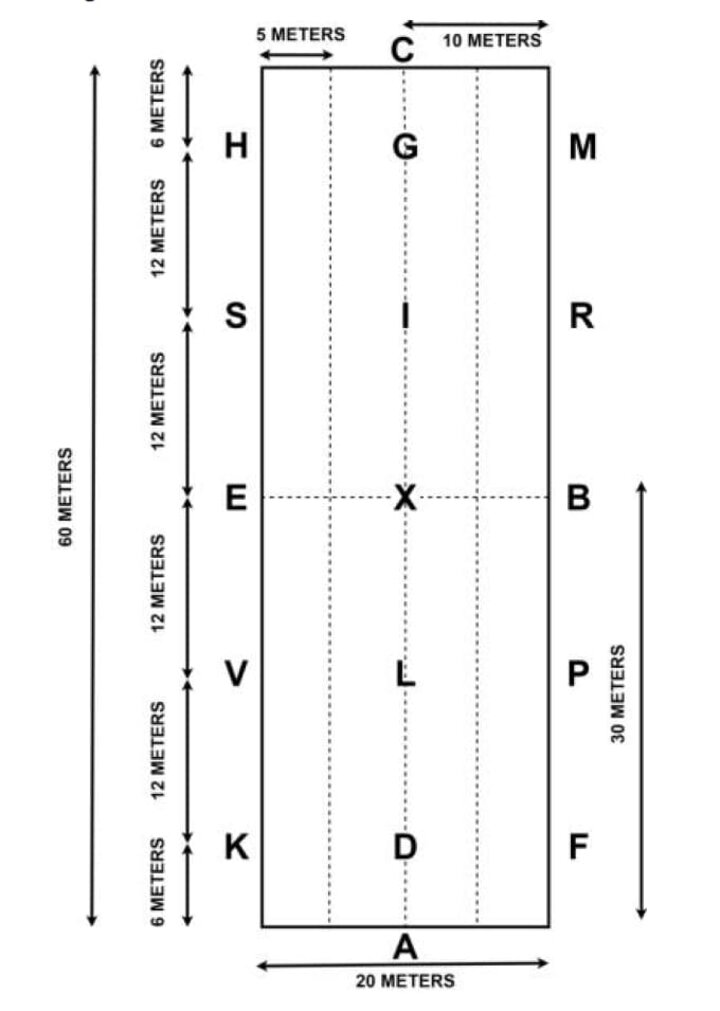Object and General Principles
- 1. The object of Dressage is the harmonious development of the physique and ability of the horse. As a result, it makes the horse calm, supple, loose and flexible but also confident, attentive and keen, thus achieving prefect understanding with its rider.
- These qualities are revealed by:
- The freedome and regularity of the paces;
- the haromony, lightness and ease of the movements;
- The lightness of the forehand and the engagement of the hindquarters, originating in the lively impusion;
- The acceptance of the bridle with submissive throughout and without any tenseness or resistance.
Tack and Attire
- Exhibitors may use Western, Hunter or Saddle Seat tack and attire. All tack and attire must be of the same discipline, no cominations allowed. Refer to requirements on pages 17-26.
- All classes may carry one whip no longer than 48 inches including lash.
- Spurs must be made of metal, and there must be a shank, whether curved or straight, pointing directly back from the center of the spur. If the shank is curved, the spurs must be worn only with the shank directly downward. However, swan necked spurs are allowed. The arms of the spur must be smooth. This restriction also applies to warm-up and training areas, as well as during competition.
Prohibited: Spurs with rowels for English Dressage. Kimberwick bits.
Attire
- Refer to requirements on pages 17-26 for Hunter, Saddle Seat and Western attire. When competing in Hunter/Saddle Seat attire, half chaps are permitted. When competing in Western attire, chaps are permitted.
- The 4-H armband is required.
- Gloves are recommended. Breeches or jodhpurs may be white, light, or dark colored. Bright colors or patterns are not permitted.
- In extreme heat and/or humidity, management can allow competitiros to show without jackets. However, competitors must wear regulation hat or helmet and solid long- or short-sleeved shirt without neckwear.
Tack - Western
- All tack must conform with regulations for Western Pleasure and Western Horsemanship, pages 17-26.
- Western riders may use one hand or two hands on reins. Snaffle bits may be used on horses of any age. Rowelled spurs are allowed but must be dull and free moving.
Tack - English
- Saddle pads should be white or of conservative color. Logos are not permitted.
- An English type saddle, with or without a tree, with flaps and stirrups is recommended for all English dressage tests and classes.
- A plain snaffle bridle and a regular cavesson, a dropped noseband, a flash noseband (a combination of a cavesson noseband and a dropped noseband attachments), a crescent noesband (commonly known as a firgure 8 noseband), or a crossed noseband. Except for the crescent noseband, buckles and a small disk of sheepskin, which may be used in the intersection of the two leather strapsof a crossed noseband, the noseband must be made entirely of leather or leather-like material. A padded noseband is allowed.
- At any level of competition, a cavesson noseband may never be so tightly fixed that it causes severe irritation to the skin.
- All bits must be smooth and with a solid surface. Twisted, wire and rolled bits are prohibited. The thickness of the snaffle mouthpieces must be a minimum 3/8 inch in diameter at rings or cheecks are permitted.
- A breastplate and/or crupper may be used.
- Braiding of the horse's mane and tail is permitted.
- English dressage style roller ball, and blunt bumper spurs are permitted. Prohibited: Logos on pads, Kimberwick, twisted, wire, or rolled bits. Martingales, bit guards, any kind of gadgets (such as bearing, side, running, balancing reins, tongue tied down, etc.). Any kind of boots or bandages (including tail bandages) and any form of blinkers, ear muffs or plugs, nose covers, eat covers, and hoods. Decoration of the horse with unnatural things, such as ribbons, flowers. Spurs with rowels.
Readers
Readers are allowed, but not required, at the State 4-H Horse Show and other 4-H competitions. Show management may determine the classes in which readers are permitted.
Classes
Show management may limit the number of classes/rides per day. At the State 4-H Horse Show, exhibitors may enter either English and Western Dressage (Level II) or English and Western Dressage (Level III), when offered, not both.
Ring Requirements
Show mangement will utilize a large ring (shown on page 134). Large ring should be used whenever possible, especially for State Horse Show and all First and Level I tests.
Judging
Judges need to be provided with a table and chair positioned safely outside of the dressage arena and placed behind level C. A scribe should be provided for the judge.
To learn more about Dressage, terminology, scoring, etc., go to United State Dressage Federation website at www.USDF.org.
To learn more about Western Dressage, go to the Western Dressage Association of America website at www.WesternDressageAssociation.org.
Dressage Arena
